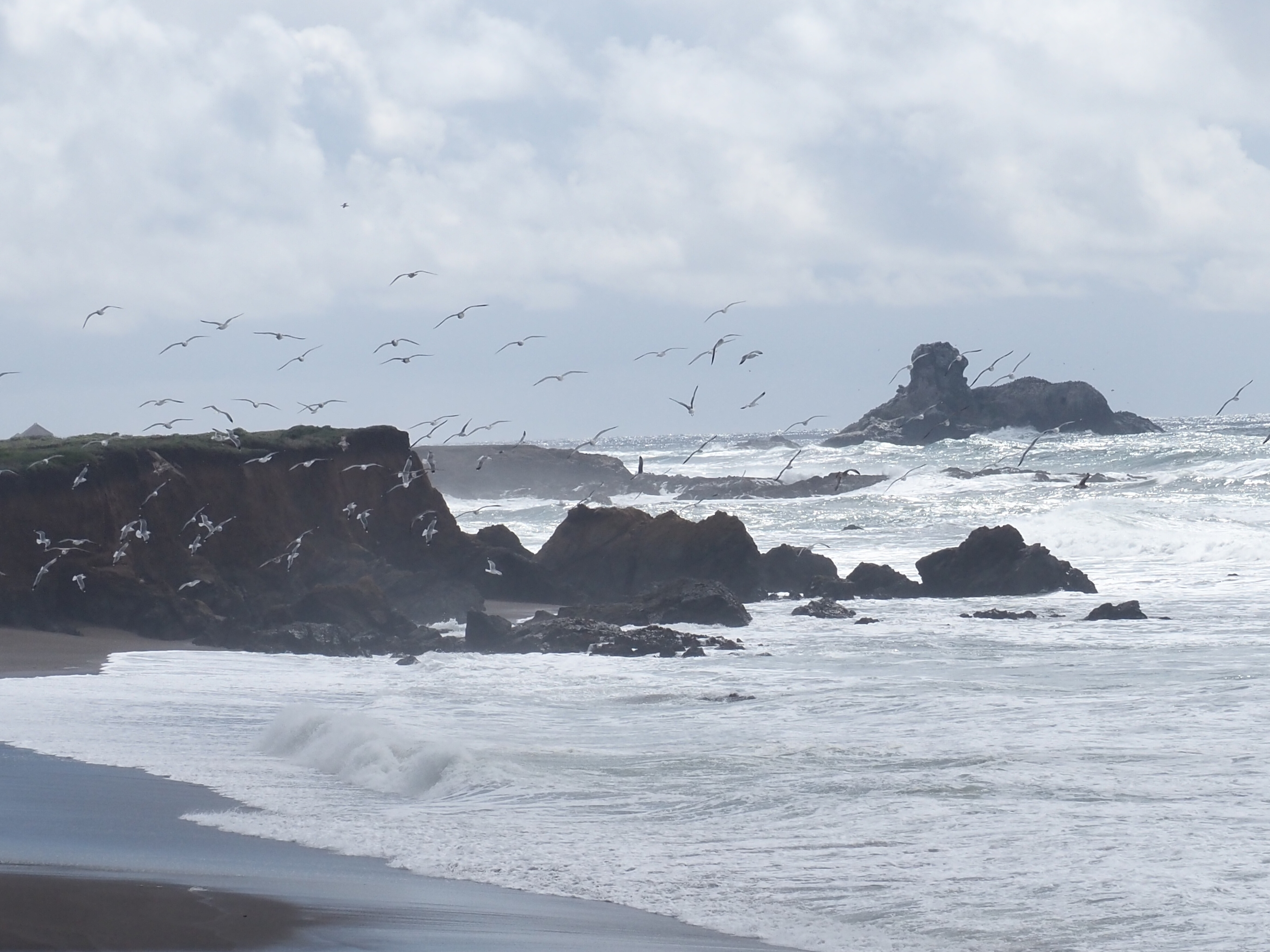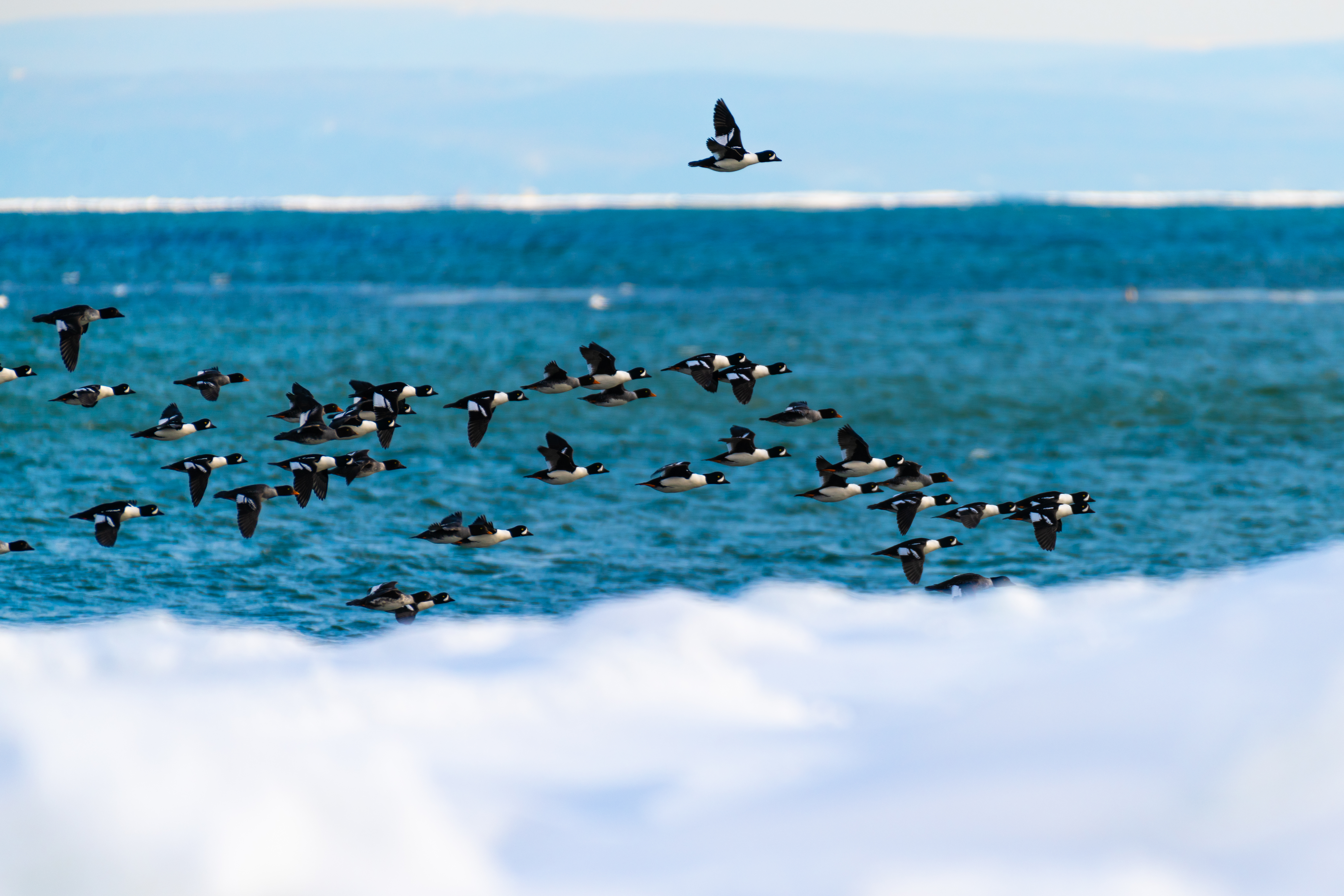The first trip of the season is definitely one of the most exhilarating. The excitement of being on the water again after a long winter has a lot to do with it. Motivated by this springtime exuberance, we nervously await our first spout. Will we see any whales today?
Leaving Anse-à-Brillant at noon, I headed to Grand-Grave on the other side of Gaspé Bay to pick up my teammates at 12:30. I had gotten wind that they had seen spouts off of Cap-aux-Os, which they confirmed. We thus set sail toward the upper reaches of the bay.
Just a half hour after we left, we spot a beautiful humpback spout quite far out in the bay… and then a smaller one… and then another big blow. It’s not one whale, but three. Even after over fifteen years on the water observing them, I’m still as excited as a child receiving its very first bicycle. The enthusiasm of finding them quickly gives way to an eagerness to know who they are.
Are these animals known to the Mingan Island Cetacean Study (MICS)? Have I ever seen them myself? Very quickly, it becomes clear that we are observing a mother with her calf, but it is not possible to identify this female, who barely lifts her tail, if at all. We therefore turn our attention to the third individual who, from the very first dive, has been showing us its undertail pattern, which I am seeing for the ninth consecutive year. It’s the very faithful H626 BBR, whom we call Gaspar in the Estuary. This humpback is always very active, which it will show me the next day with a few breaches. She seems to be chaperoning the other female and her calf by following them closely. It took me at least an hour before I was able to photograph this mother’s undertail and identify her as H008 Pseudo, who has this frustrating characteristic of dragging her tail on the water whenever she dives. I had first observed her in 2012 in Percé. This time around I had to follow her for several miles before I could take a good enough photo to allow for an identification. In 1982, Pseudo is one of the first females to have been seen with a calf by MICS researchers in the Gulf. This observation does nothing to quell my excitement. This trio remained far up the bay during my 4-day stay there. Lucky are the residents of Cap-aux-Os, who are able to admire this whale spectacle from their balconies.
During the remainder of my stay in the area, I observed several seals (gray and harbour) and five minke whales and, of course, a multitude of stunning seabirds.
Here are a few photos from this spring outing.
[metaslider id=19159]
 René Roy is an amateur cetologist who is passionate about the sea and whales; he resides in Pointe-au-Père, in the Bas-Saint-Laurent region. For the past few years, he has undertaken photo-identification expeditions for the Mingan Island Cetacean Study (MICS), mainly in the Gaspé. He also volunteers for the Quebec Marine Mammal Emergency Response Network.
René Roy is an amateur cetologist who is passionate about the sea and whales; he resides in Pointe-au-Père, in the Bas-Saint-Laurent region. For the past few years, he has undertaken photo-identification expeditions for the Mingan Island Cetacean Study (MICS), mainly in the Gaspé. He also volunteers for the Quebec Marine Mammal Emergency Response Network.





